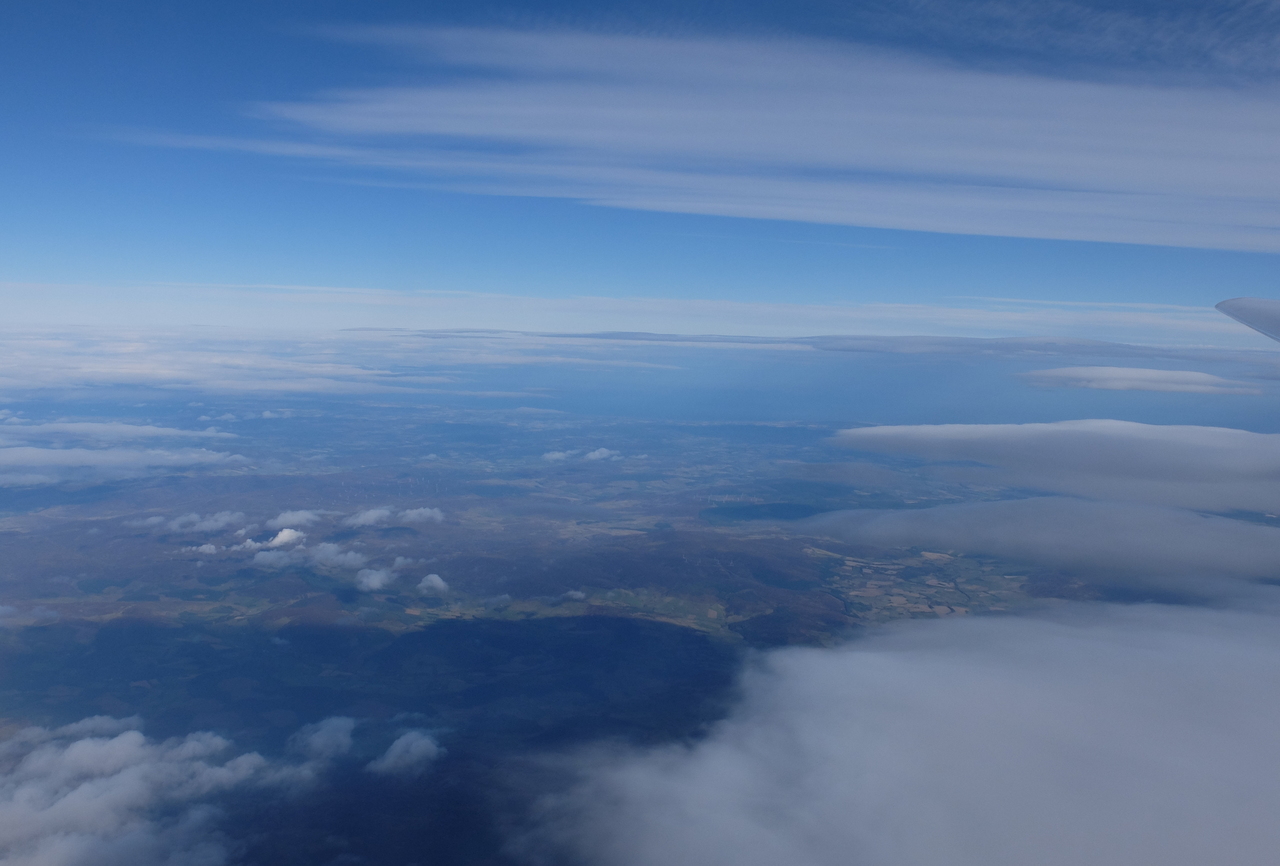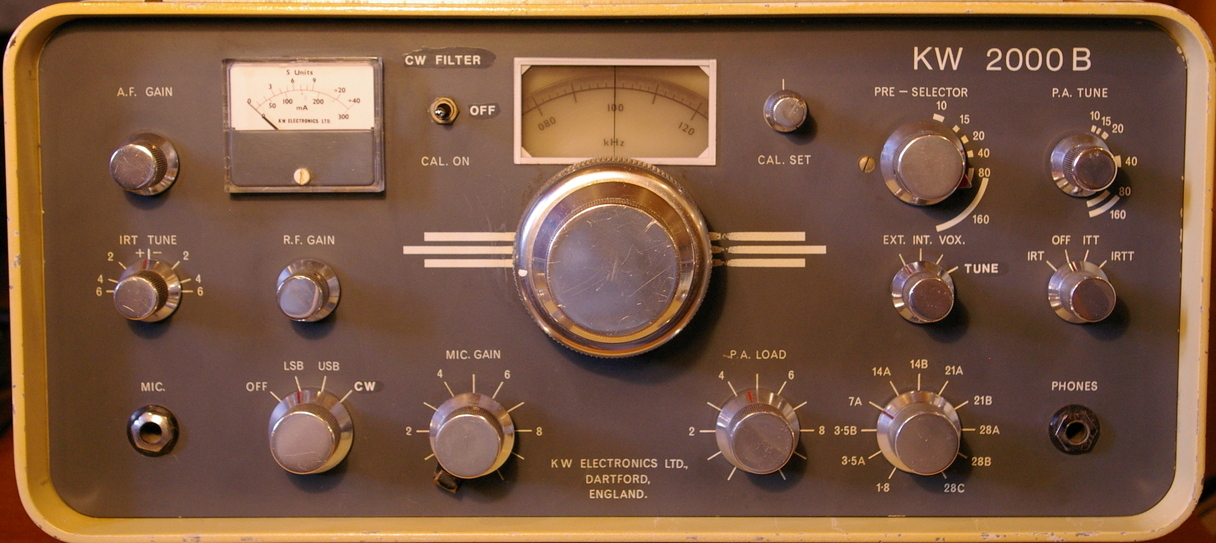I had so much fun sorting out my FT-101e, and a Drake TR7, that I soon felt the need for another vintage rig to play with. I got to hear of this KW 2000B through a friend of a friend and made some enquiries…
Sharing a pint or two in a pub with a few friends from the Cray valley radio society over the Christmas period, and hearing of their exploits preparing KW radios for the GB8KW special event station cemented my interest, as did a few on-air chats with Steve, G3ZPS using various vintage radios in his collection.
On 1st May 2019 I became the proud owner of KW 2000B serial number B1562 (pictured above).
Produced throughout the 1960s and into the early 1970s by the KW electronics company of Dartford, the KW 2000 line of radios capitalised on the growth of SSB on the HF bands and the allocation of top band in the UK, including the need for radios capable of mobile operation. The prospect of installing a radio of this heft in a modern car would be quite a challenge, but KW supplied a power pack to run the rigs from 12 Volts in addition to a mains power supply.
The KW 2000 B is an all valve HF transceiver that covers all bands (excluding WARC) from top band to 10M and SSB or CW modes of operation. Transmit output is around 100 Watts PEP on the lower bands, reducing somewhat on the higher bands, from a pair of 6146 beam tetrodes in the PA. It has a resonable line-up of features including RIT and XIT, VOX and a relatively decent mechanical IF filter from Kokusai.
The front panel is attractively adorned with nice, shiny turned aluminium knobs and features a really smooth dual rate VFO drive. There’s nothing particularly exotic inside and most parts are easy to either source or replace with more modern equivalents, meaning that this is a nice practical “classic” rig that can be a workhorse too. Although you’ll probably quickly find the receiver’s shortcomings in contest conditions, it’s perfect for a rag chew on 80m!
The previous owner informed me that this radio had been part of the Southampton University Wireless Society station and, indeed, some of the PCBs that formed modifications to the radio bore their callsign, G3KMI.
The radio arrived not entirely in the condition in which it left the factory! As can be seen from the photograph, the “Tune” setting on the mode switch has been changed to add a “CW” mode, and a “Tune” position has been added to the MOX/VOX switch. In addition, the calibrator button has been replaced by a 3 position switch that, in addition to controlling the marker generator, can switch in a Collins mechanical CW filter that has been added in addition to the standard Kokusai filter for SSB mode.
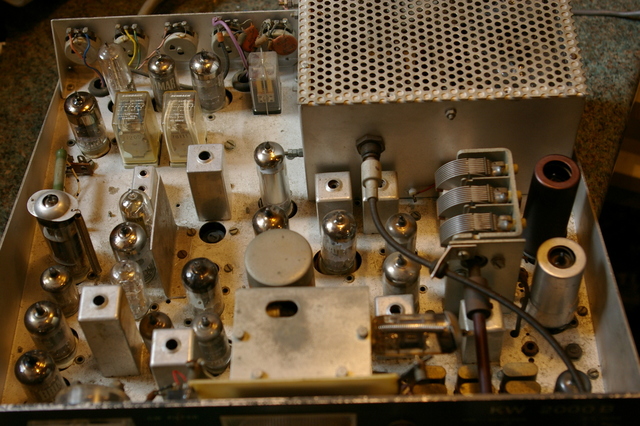
Inside there is evidence of an additional carrier oscillator, perhaps added to support the “CW” mode, and a switch, which disables the AGC on receive along with some other unidentified additions.
After carefully bringing up the power supply, the receiver shows decent signs of life and, now the AGC operation has been restored, it has stopped jumping off the table every time a strong signal is encountered! On the transmit side, it puts out a few tens of watts in tune mode, but there’s a tendency for it to “take off” in some positions of the tuning controls.
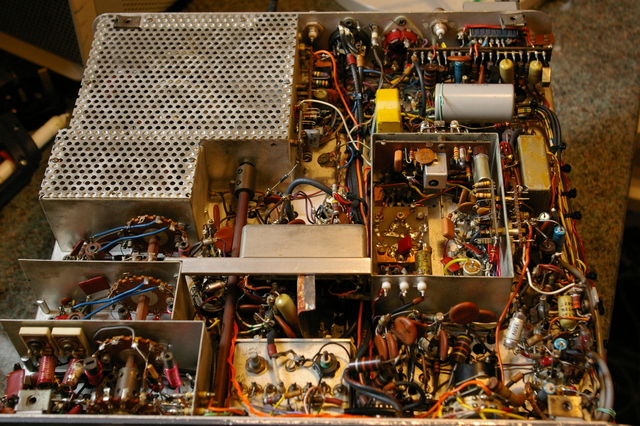
Cosmetically, the case needs respraying. I initially feared that the yellowing of the case exterior was down to nicotine, but it actually appears to be the result of some kind of lacquer or varnish on the case that has yellowed and the inside of the radio is contaminated with nothing worse than a little dust, the worst of which was seen off with an air line.
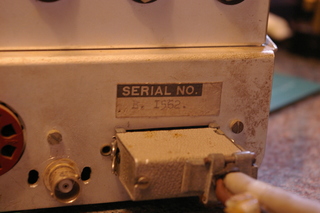
I am in two minds whether to revert it to standard or to keep the modifications it has. I need to do some more digging…
Check here for updates as the story progresses!
